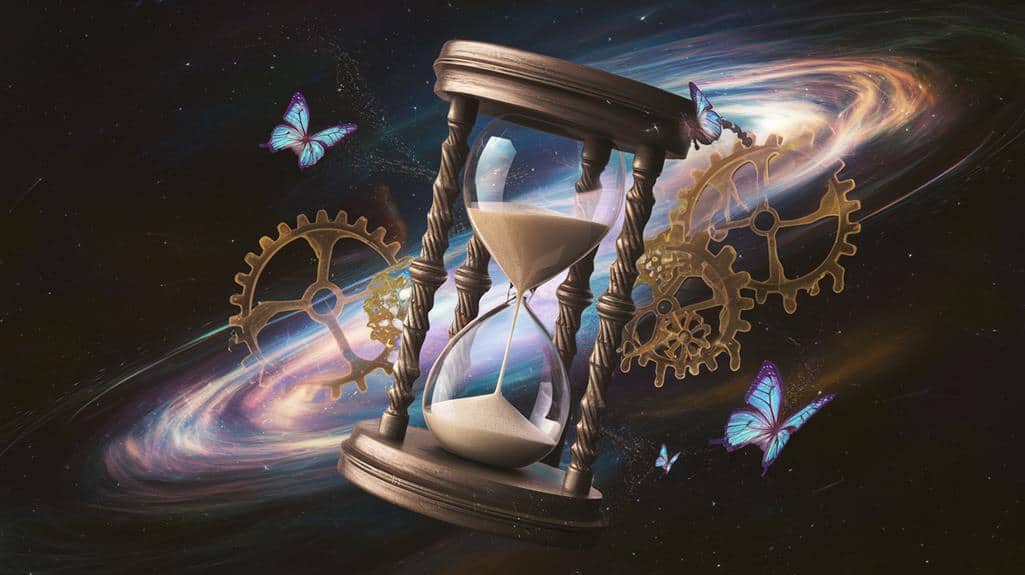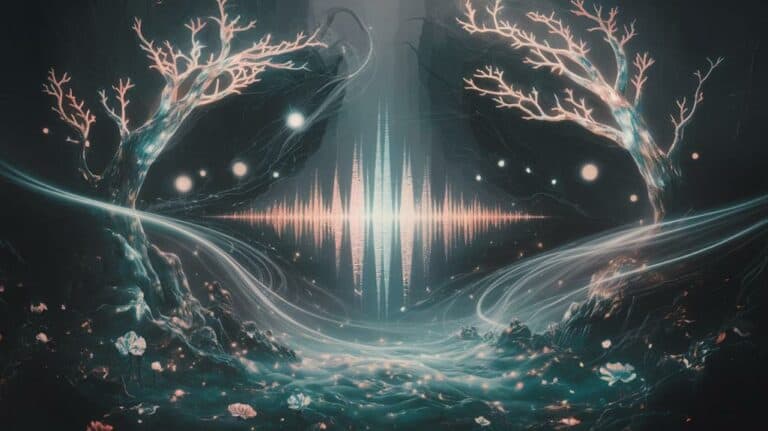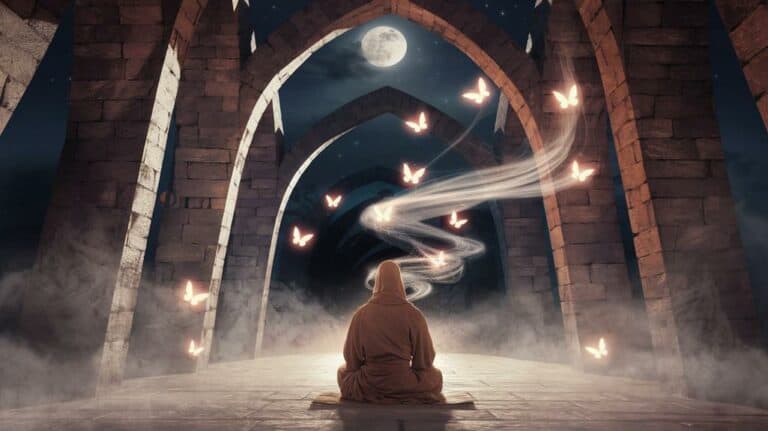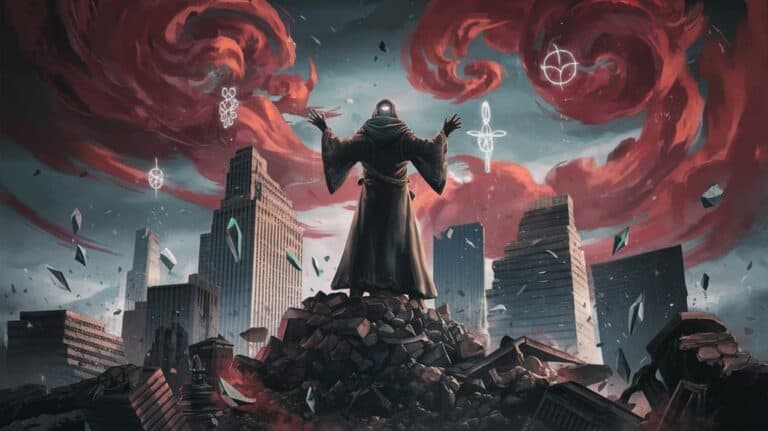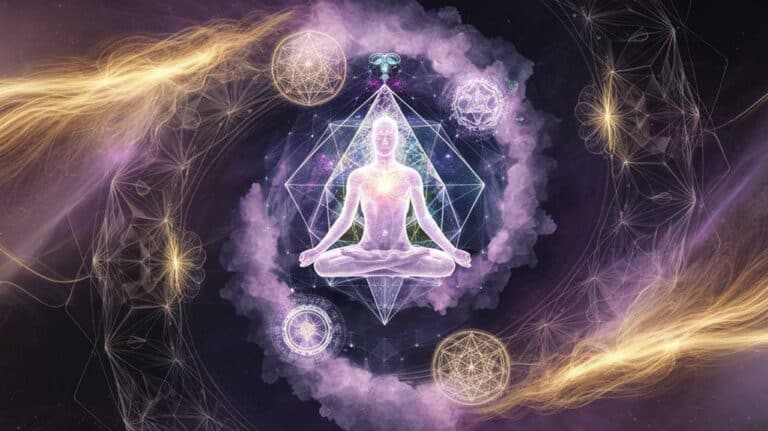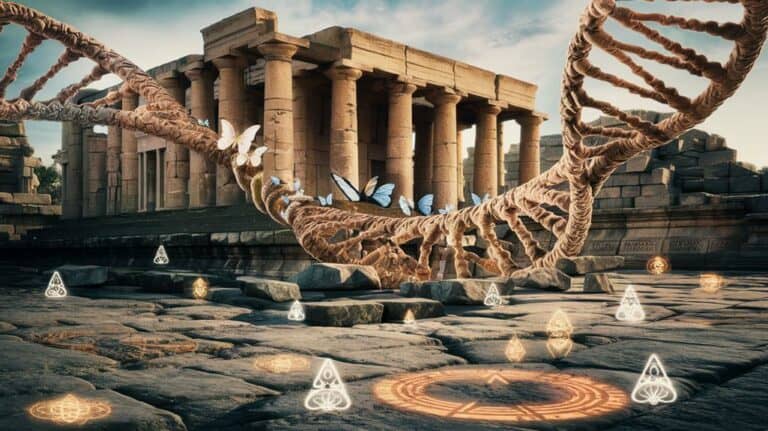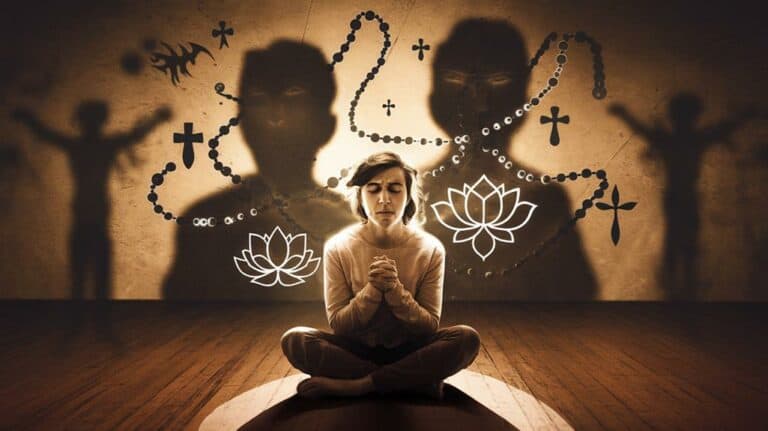Mystical Interpretations of Time and Eternity
You’ve probably noticed how your experience of time isn’t always consistent with what your clock says. In moments of deep meditation or profound insight, you’ll find that time seems to dissolve, revealing glimpses of what mystics have long described as the eternal now. This timeless dimension exists beyond the familiar tick-tock of linear progression, suggesting a reality where past, present, and future converge into a unified whole. As you explore these mystical interpretations, you’ll discover why ancient wisdom traditions have consistently pointed to a sacred understanding of time that transcends our ordinary temporal boundaries.
Ancient Views of Cyclical Time
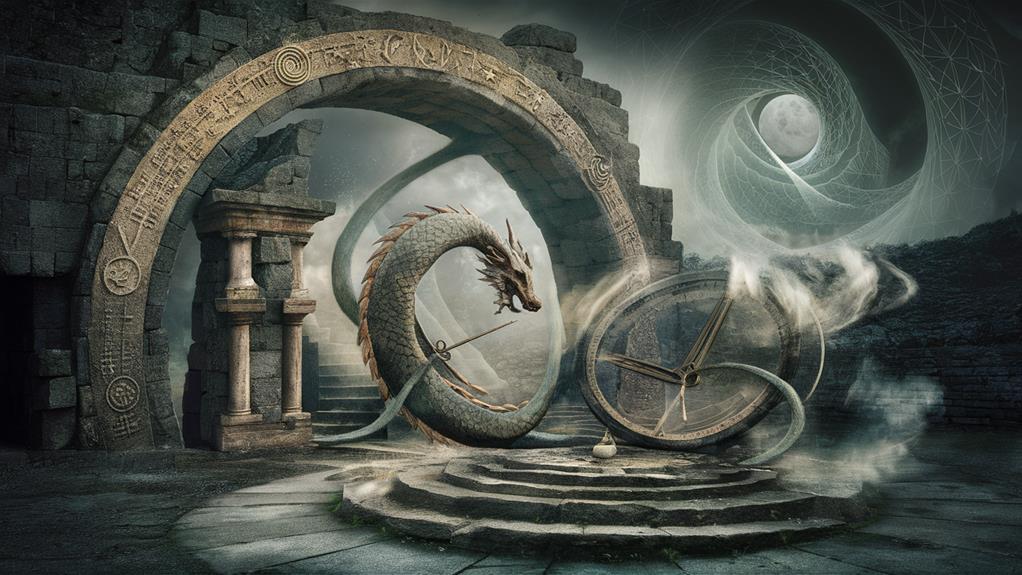
Ancient civilizations viewed time not as a linear progression but as an endless cycle of birth, death, and renewal. You’ll find this profound understanding woven into the fabric of their existence, from the way they structured their rituals to how they interpreted celestial movements.
As you explore deeper into their worldview, you’ll discover that they didn’t see themselves trapped in time, but rather participating in its eternal dance.
When you examine the ancient Egyptian concept of time, you’ll notice how they connected their lives to the cyclical flooding of the Nile, while the Mayans developed intricate calendar systems that reflected time’s circular nature.
You’re part of this continuing tradition whenever you witness the seasons change or observe the moon’s phases. These ancient cultures would remind you that you’re not merely moving forward through time – you’re participating in its perpetual revolution.
They’d tell you that death isn’t an endpoint but a transformation, that endings herald new beginnings, and that you’re caught in an eternal cosmic wheel that’s both terrifying and beautiful in its endless turning.
The Eternal Now
Consciousness exists only in the present moment, a truth that mystics across cultures have long emphasized. When you’re fully aware, you’ll notice that you can’t directly experience the past or future – they exist only as thoughts arising in your current awareness. This eternal present, which you’re experiencing right now, is where all of life unfolds.
You might notice that time seems to flow differently when you’re deeply present. That’s because your usual sense of sequential time dissolves into what mystics call “the eternal now” – a state where past, present, and future converge into a single point of awareness.
In this timeless dimension, you’re not bound by chronological constraints; instead, you’re touching something vast and unchanging beneath the surface of temporal reality.
This perspective invites you to question your relationship with time itself. When you release your grip on mental constructs of past and future, you’ll discover that what remains is an infinite depth of presence.
It’s in this space that you’ll find what spiritual traditions call your true nature – the unchanging witness to all temporal phenomena.
Time in Eastern Mysticism
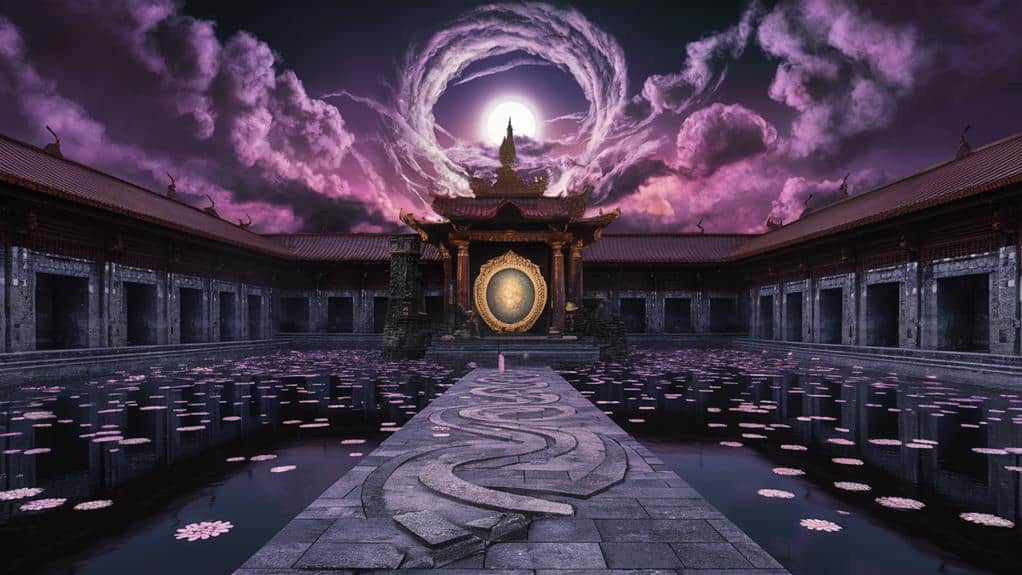
Eastern mystics have long viewed time as an illusion – maya – that veils ultimate reality from human perception. When you explore ancient traditions like Buddhism and Hinduism, you’ll discover that time isn’t the linear progression you’ve been conditioned to accept. Instead, you’re invited to experience reality as an eternal present, where past and future exist simultaneously in an infinite now.
You’ll find this perspective especially evident in meditation practices, where you’re encouraged to transcend temporal boundaries and merge with the timeless awareness that underlies all existence. As you sit in contemplation, you’ll notice how your ordinary sense of time dissolves, revealing glimpses of what the sages call “cosmic consciousness.”
Through these practices, you’re not merely observing time – you’re awakening to its fluid, dream-like nature. In the Vedantic tradition, you’re taught that your true self exists beyond time’s constraints.
When you recognize this truth, you’ll understand why Eastern mystics emphasize liberation from temporal bondage. Your journey isn’t about moving through time but about awakening to the timeless dimension of your own being.
Sacred Moments Beyond Linear Reality
Throughout mystical traditions, sacred moments emerge when you break free from linear time‘s constraints, revealing profound insights into reality’s deeper nature. You’ll discover these timeless intervals during deep meditation, ritual practices, or spontaneous glimpses of transcendence when the ordinary flow of minutes and hours dissolves into something far more expansive.
In these sacred moments, you’re stepping beyond the familiar territory of past, present, and future into what mystics call the eternal now. You’ll find yourself in a space where time doesn’t march forward but rather expands in all directions simultaneously. Your consciousness shifts from measuring duration to experiencing depth, as each moment becomes a portal to profound understanding.
You’re no longer bound by time’s apparent linearity when you enter these sacred spaces. Instead, you’re touching something timeless – the underlying fabric of existence that’s always present yet often hidden by our everyday perception.
Through these experiences, you’ll realize that what we call “time” is merely one layer of a much richer reality, waiting to be explored through your deepened awareness and spiritual practice.
Mystical States and Timelessness
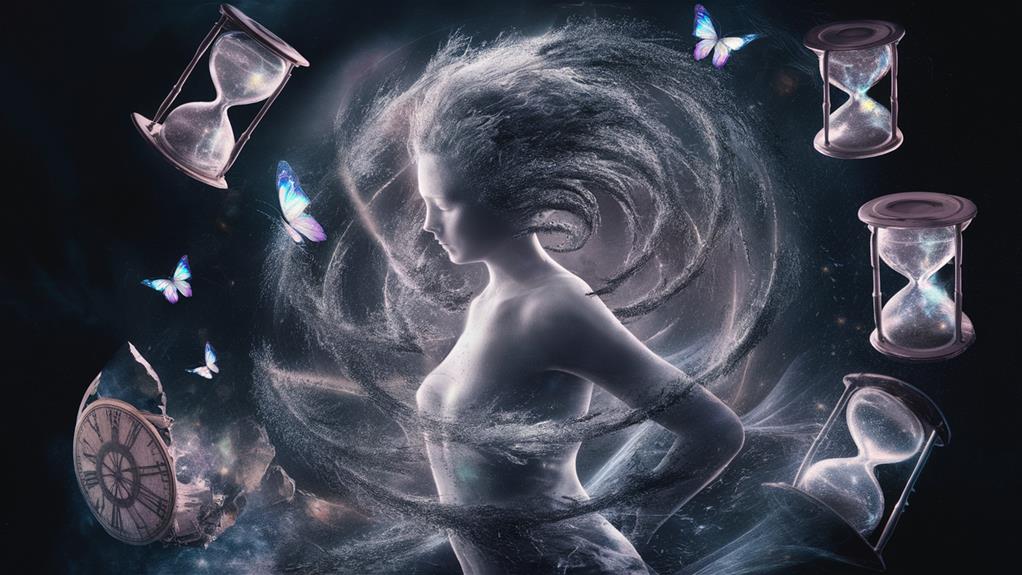
During mystical experiences, you’ll often find that time as you know it ceases to exist entirely.
You’re transported beyond the familiar tick-tock of chronological progression into a zone where past, present, and future merge into an eternal now. In these profound states, you’ll discover that your ordinary perception of sequential moments dissolves, replaced by an expansive awareness that transcends temporal boundaries.
You might notice how your consciousness shifts from its usual time-bound framework into a state where duration loses all meaning.
Deep meditative practices can guide you into this timeless domain, where you’ll experience a profound connection with what mystics call “eternal presence.” Here, you’ll find yourself suspended in a state of pure awareness, free from the constraints of linear time that typically govern your daily existence.
This liberation from temporal boundaries isn’t merely an absence of time – it’s an entrance into a fuller dimension of reality.
You’re accessing a state of being where the artificial divisions between moments disappear, revealing an underlying unity that’s always present yet usually hidden beneath the surface of ordinary consciousness.
Modern Perspectives on Divine Duration
Contemporary thinkers offer three distinct views on divine duration: the eternal timelessness described by classical theologians, the temporal progression embraced by process philosophers, and the hybrid models that attempt to bridge both perspectives.
You’ll find that each approach reveals different facets of humanity’s relationship with the divine. When you consider timeless eternity, you’re touching upon the notion that God exists outside the flow of time, experiencing all moments simultaneously in an eternal “now.” This view lets you reconcile divine foreknowledge with human free will, as God’s perspective transcends sequential causation.
Yet process theology invites you to imagine a deity who evolves alongside creation, participating in time’s unfolding drama. You’re asked to contemplate a God who genuinely responds to your choices, sharing in the universe’s becoming.
The hybrid models you’ll encounter suggest that divine nature might encompass both temporal and atemporal aspects, much as light exhibits both wave and particle properties. These perspectives don’t just reshape your understanding of divinity; they transform how you perceive your own temporal existence within the cosmic dance of being.



